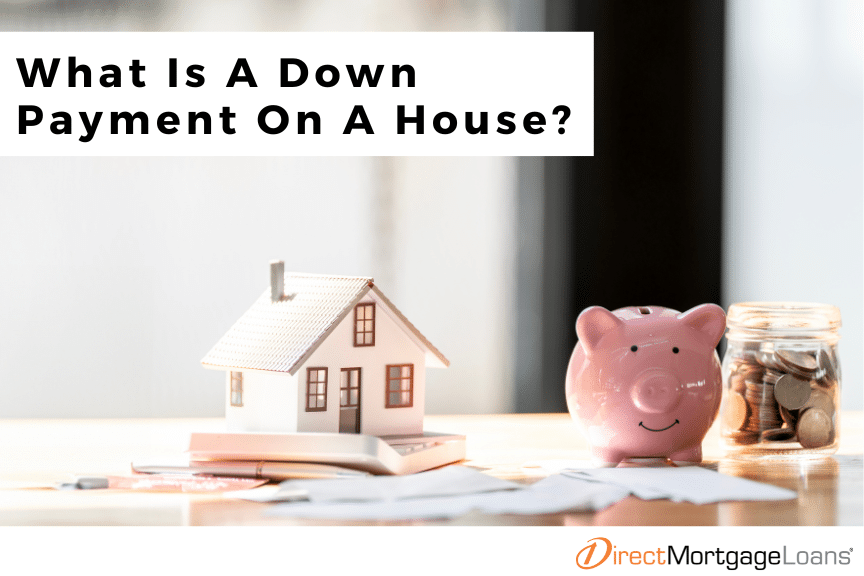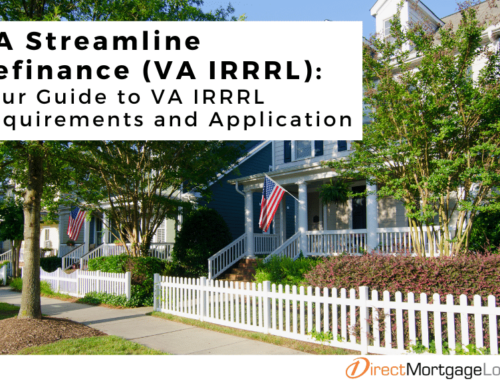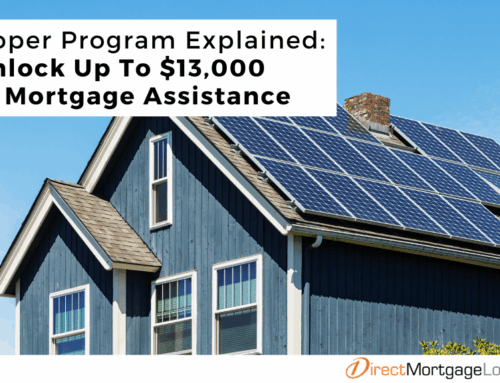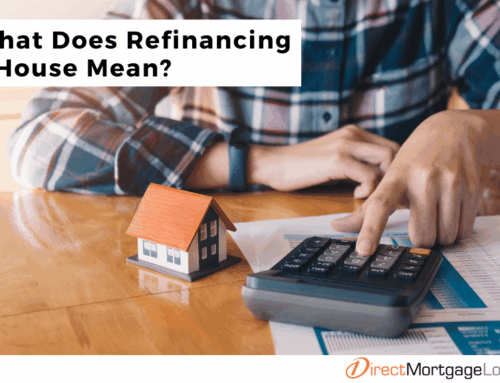Buying a home is an exciting milestone, but it also comes with important financial decisions—starting with the down payment. For many, the down payment is one of the most significant upfront costs in the homebuying process, and understanding how it works is essential. Whether you’re a first-time buyer or preparing for your next home purchase, knowing what a down payment is and how it impacts your mortgage can set you on the right path.
This guide will walk you through everything you need to know about down payments, from why they matter to how much you might need. Additionally, we will explore the benefits of both larger and smaller down payments. By the end, you’ll have a clear understanding of how to approach this critical step in achieving homeownership.
Subscribe to our blog to receive notifications of posts that interest you!
What is a down payment on a house?
A down payment is the initial sum of money you contribute toward the purchase price of a home. Typically expressed as a percentage of the home’s value, the down payment is paid upfront at the time of closing. This payment reduces the amount you need to borrow from a lender and establishes your equity in the property from the start.
For example, if you’re purchasing a $300,000 home with a 10% down payment, you’ll pay $30,000 upfront and finance the remaining $270,000 through your mortgage. The size of your down payment can influence various aspects of your loan, including monthly payments, interest rates, and whether you need private mortgage insurance (PMI).
How do down payments work?
Down payments work as part of a financial partnership between the homebuyer and the lender. The lender provides the majority of the funds through the mortgage loan, while your down payment shows your commitment to the purchase. This balance of borrower contribution and lender funding reduces the overall loan amount, which could positively impact your loan terms.
Your down payment also affects the loan-to-value (LTV) ratio, which compares the amount you borrow to the value of the property. A higher down payment results in a lower LTV ratio, often qualifying you for better interest rates and loan options. Additionally, some loan programs allow for smaller down payments, which can make homeownership more accessible for buyers with limited savings.
Why do lenders require down payments?
Mortgage lenders require down payments for two primary reasons: to reduce their risk and ensure borrowers have a vested interest in the property. A down payment lowers the lender’s exposure by decreasing the loan amount, which in turn reduces the likelihood of financial loss in the event of foreclosure. For borrowers, a down payment demonstrates financial responsibility and commitment to repaying the loan.
From the lender’s perspective, a higher down payment also signals that the borrower is less likely to default. This reassurance can lead to better loan terms, such as reduced interest rates or fewer additional fees.
How much do most lenders require for a down payment?
Down payment requirements vary depending on the loan type and the borrower’s financial profile. Conventional loans typically require a down payment of 5% to 20%. However, government-backed loan programs like FHA, VA, and USDA loans often have much lower requirements—or even none at all.
For example:
- FHA loans allow down payments as low as 3.5% for borrowers with a credit score of 580 or higher.
- VA loans and USDA loans often don’t require any down payment for eligible buyers, making them great options for those who qualify.
Your credit score, debt-to-income ratio, and overall financial history can also influence how much you’ll need to put down.
Minimum Mortgage Down Payment Requirements by Loan Type
When it comes to buying a home, there isn’t a one-size-fits-all approach to down payments. The amount you’ll need to put down largely depends on the type of loan you choose. Each loan program is designed to cater to different financial situations, offering flexibility for first-time homebuyers, those with lower credit scores, or buyers in specific areas.
For example, conventional loans often require higher down payments, but they may come with competitive terms for qualified buyers. On the other hand, government-backed loans like FHA, VA, and USDA loans are designed to make homeownership more accessible by offering lower or no down payment requirements.
Understanding the minimum down payment for each loan type is key to choosing the best option for your financial needs. Let’s take a closer look at the requirements for conventional, FHA, VA, and USDA loans.
Conventional Loan Down Payment
Conventional loans are a popular choice for buyers with strong credit. They typically require a down payment of at least 5%. However, if your down payment is less than 20%, you’ll likely need private mortgage insurance (PMI), which protects the lender in case of default.
FHA Loan Down Payment
FHA loans are ideal for first-time homebuyers or those with lower credit scores. These loans allow for down payments as low as 3.5% for borrowers with a credit score of 580 or higher. This offers a more accessible path to homeownership.
VA Loan Down Payment
VA loans, exclusive to eligible veterans, active-duty military members, and some military families, typically require no down payment. This benefit makes VA loans one of the most affordable home financing options. Direct Mortgage Loans offers loans tailored to your needs so if a VA loan sounds right for you, have a conversation with one of our expert loan officers to find out more.
USDA Loan Down Payment
USDA loans are designed for rural and suburban homebuyers. Like VA loans, they often require no down payment, but borrowers must meet specific income limits and location requirements to qualify.
What are the benefits of making a large down payment?
A larger down payment offers several financial advantages, including:
- Lower Monthly Payments: Since you’re borrowing less, your monthly mortgage payments are smaller.
- Reduced Interest Costs: Borrowing less also means you’ll pay less in interest over the life of the loan.
- No PMI Requirement: A down payment of 20% or more typically eliminates the need for private mortgage insurance, saving you additional monthly expenses.
- Better Loan Terms: Lenders may offer lower interest rates and fewer fees to borrowers who make significant down payments, as it reduces their risk.
While saving for a large down payment can take time, it can lead to significant savings in the long run. Talking to a professional like the ones at Direct Mortgage Loans could significantly help you in determining how much you should put down on your next home.
What are the benefits of making a smaller down payment?
Smaller down payments make homeownership more accessible for buyers who don’t have significant savings. They allow you to:
- Enter the Market Sooner: A smaller down payment means you don’t have to wait years to save up.
- Preserve Savings: By putting down less, you can keep more cash on hand for emergencies, home improvements, or other financial goals.
Many loan programs and assistance options are designed to support buyers with smaller down payments. For instance, Down Payment Assistance Programs could help cover some or all of the initial costs, making it easier to afford your first home.
However, smaller down payments often come with trade-offs, such as higher monthly payments and PMI. It’s important to weigh these factors carefully to decide what works best for your situation.
Conclusion
A down payment is one of the most important aspects of buying a home, influencing everything from loan approval to monthly payments and long-term financial stability. Whether a buyer is aiming for a larger down payment to reduce overall costs or utilizing a low down payment loan to get into a home sooner, understanding the options available is crucial.
For those who qualify, government-backed loans like VA and USDA mortgages offer the advantage of no down payment, while FHA loans provide flexibility with lower credit requirements. Conventional loans remain a strong choice for buyers who can put down 5% or more, especially if they want to avoid private mortgage insurance (PMI) by reaching the 20% threshold. Additionally, down payment assistance programs can make homeownership more accessible by helping eligible buyers cover part of their upfront costs.
Navigating the homebuying process can feel overwhelming, but having the right mortgage partner makes all the difference. Direct Mortgage Loans offers personalized guidance and a variety of loan options to help buyers find the best financing solution for their needs. By working with an experienced team, borrowers can gain clarity on their mortgage choices and confidently take the next steps toward homeownership.
For those ready to explore loan options or get prequalified, reach out to get your homebuying journey started.
Rates are subject to change. Eligibility and approval are subject to completion of an application and verification of home ownership, occupancy, title, income, employment, credit, home value, collateral, and underwriting requirements. Direct Mortgage Loans, LLC NMLS ID# is 832799 (www.nmlsconsumeraccess.org). Direct Mortgage Loans, LLC office is located at 11011 McCormick Rd Suite 400 Hunt Valley, MD 21031. This is a paid endorsement. Equal housing lender.







Leave A Comment
You must be logged in to post a comment.